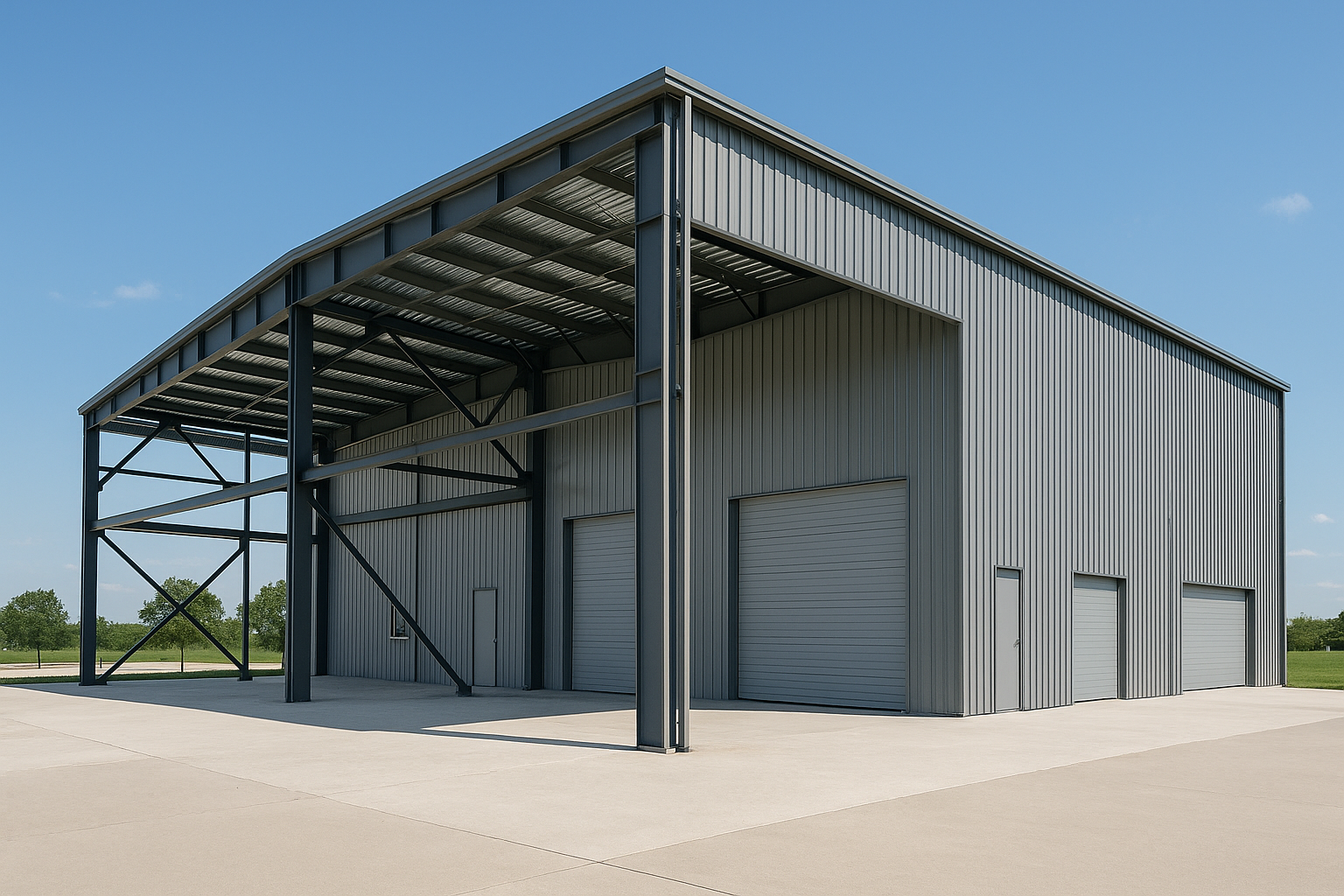1. Definition and Development Trend of Steel Buildings
Steel buildings refer to structures where structural steel is the main load-bearing framework. Widely used in industrial plants, warehouses, commercial buildings, agricultural facilities, and infrastructure projects, steel buildings are becoming the preferred choice in global construction. This shift is driven by the growing demand for fast, sustainable, and adaptable construction methods.
Steel components like H-beams, box columns, steel trusses, and purlins are prefabricated in factories and assembled on-site. This industrialized process significantly reduces construction time, labor costs, and environmental impact.
2. Comprehensive Comparison: Steel Buildings vs. Traditional Construction
| Comparison Aspect | Steel Buildings | Traditional Brick/Concrete |
|---|---|---|
| Construction Speed | Fast installation in weeks | Long timelines (months to a year) |
| Load-Bearing Capacity | High strength-to-weight ratio | Heavy structure, high foundation |
| Cost Control | Lower lifecycle and maintenance costs | Higher long-term maintenance |
| Environmental Impact | Recyclable, low carbon emissions | High emissions and resource usage |
| Flexibility | Easy to expand, remodel, and optimize layout | Limited design flexibility |
| Disaster Resistance | Fire-resistant, earthquake-resistant | Varies by materials and design |
In today’s energy-efficient and eco-conscious world, steel buildings play a pivotal role in achieving carbon neutrality and green city development.
3. Key Structural Systems of Steel Buildings
A standard steel building typically includes:
-
Primary Framing: Main load-bearing skeleton using H-beams, box columns, and trusses
-
Secondary Structure: Purlins, bracing rods, and ties that distribute loads
-
Cladding System: Roof and wall panels (corrugated sheets or insulated sandwich panels)
-
Connection System: High-strength bolts, welds, and anti-seismic joints
-
Foundation System: Anchor bolts connecting to reinforced concrete bases
Additional systems may include drainage, skylights, ventilation, and energy-saving roofing depending on the application.
4. Common Structures and Application Scenarios
| Structure Type | Features | Best Uses |
|---|---|---|
| Single-Span Frame | No internal columns, open space | Warehouses, exhibition halls |
| Multi-Span Frame | Intermediate columns for heavier loads | Industrial workshops, logistics hubs |
| Multi-Story Frame | Up to 5 floors with steel frameworks | Offices, educational buildings |
| Crane-Ready Frames | Integrated crane beams for heavy equipment | Shipyards, machinery plants |
| Cold Storage Units | With insulation and airtight panels | Food warehouses, pharmaceutical labs |
Steel buildings offer design versatility while meeting the structural demands of different industries.
5. Sustainability and Technological Innovations
✅ Environmental & Regulatory Advantages:
-
Over 90% of steel components are recyclable
-
Meet CBAM (EU Carbon Border Adjustment Mechanism) and ISO 14001 requirements
-
Low noise and dust levels during on-site assembly
🔧 Future-Oriented Technologies:
-
BIM Design: Accurate 3D models for production and assembly
-
AI Load Analysis: Optimized structure performance
-
Nano-Coating: Advanced corrosion resistance
-
Seismic Joints: Adapted to high-risk regions
Conclusion
Steel buildings are redefining how we build. With unmatched speed, strength, and sustainability, they offer a long-term, efficient solution for modern construction. Whether you’re planning a factory, warehouse, or commercial space, steel buildings are a future-ready investment.



